GIA’s New Report Format And Diamond Certificate Layout
Starting from January 1st 2014, GIA will begin issuing reports for their services in a new format. I have to tell you I saw this coming when I first noticed GIA completely revamped their website in mid-2013. It seems like GIA finally decided to give their image a make-over in order to keep up with times.
Did many of you also noticed that the corporate colors for their website design had shifted primarily from blue towards a much more neutral appearance using colors like grey and white? Yep, that was a clear signal change was coming.
With the revamp, the GIA website also took on a modern outlook which utilizes a flat design concept.
The New Grading Report Design Launched in 2014
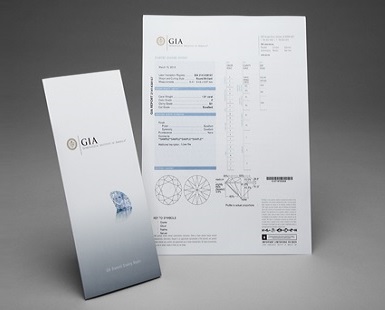
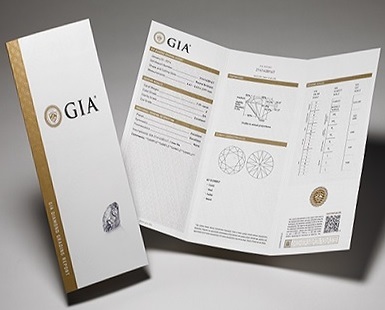
Sample GIA certificates of the old design (blue) vs the new design (gold).
For people who are familiar with the blue-white designs of the older reports, the new format looks vastly different. As you can see above, blue is no longer used. In its place, we see gold borders and a less cluttered layout of information.
So, What’s Really Changed in the GIA Certificate?
Well, nothing much as changed from both a consumer and seller’s point of view. All the critical information like the 4Cs, diamond plot, comments and diagrams are essentially kept as it is. The only thing major difference lies in the rearrangement of the data display and the introduction of new security features.
Interestingly, the reports are now printed on an “unique” and “durable” type of paper. This paper is proprietary to GIA and I personally think that this is a great move to prevent fake reports. Ultimately, it helps both sellers and buyers to authenticate the stones they are purchasing.
The New QR Code Reduces Inconvenience to Verify Reports
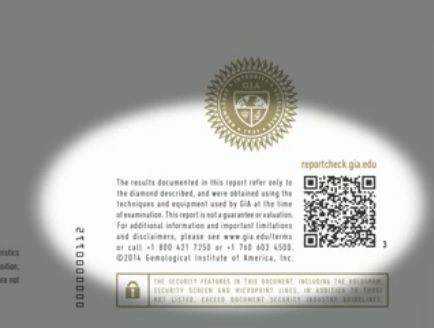
At the bottom right of the new formatting, you will also notice a QR code that allows you instant access to GIA’s database. I think that this is a great feature as it reduces the inconvenience of verifying a report. You can now pick up a report, scan the code and verify it in a matter of seconds.
I could imagine scenarios in showrooms where customers can now use their mobile devices to check the authenticity of the report and also scenarios in diamond bourses where traders can now conduct business in a much more effective manner.
Is Your Old Report Still Valid?
Yes, it is. Don’t worry, if your diamond is graded as an F VS1, the result will probably be the same in the new format. In my opinion, it doesn’t really matter if you are currently holding on the older report. It’s just a matter of aesthetics and not so much of whether the grading standards had been changed.
“Upgrading” Your Current Report
For people who want a copy of the latest report for their current diamonds, GIA does offer some options for you to get your hands on them. For newly issued reports dated between July 1st, 2013 to December 31st, 2013, the re-issues can be requested for free.
For reports issued between January 1st, 2013 to June 30th, 2013, the re-issues will be available for a small fee. In both scenarios, you do need to return the original reports to GIA before they will issue you one in the new format.
For reports that were generated before 31st December 2012, there are currently no options to get a new report except by sending the diamond back for a re-grading. Needless to say, you need to pay the full fee for the service. At the point of writing this article, this is how things are and they may or may not change in future.
For more details, you can always head over to: https://www.gia.edu/gem-lab-report-new-format
So, the next time you happen see a GIA report with the gold colors instead of the usual blue-based reports, don’t be alarmed. It isn’t a scam nor a ploy by the vendor to trick you with a fake report. Instead, whip out your smart phone and verify the report instantly online with GIA.
I personally think the new report is a step in the right direction as the data is displayed in a much more concise manner. The proportions chart used to be hidden in a corner of the report but in the current design, the report opens up and the diagram is smack right in the middle of your face.
Limitations of the Grading Report For Diamond Selection
The grading report only shows the gemological properties of the diamond and doesn’t reveal how the diamond looks like in real life. And let me tell you; one of the biggest mistakes that consumers make is to make a purchasing decision based solely on a grading report.
Here’s a case study using 3 diamonds that should look the same on paper. Both are 1 carat in size and have F color, VS1 clarity and similar proportions. Yet, they look vastly different in real life and have different optical performance.
I want you to click on the image below to view all 3 diamonds in full HD videos and interact with them. Only one of the diamond below is well cut while the other 2 are mediocre. Do you know which one it is?
The answer is the middle stone. The ideal scope image and hearts & arrows image are tangible proof of the diamond being extremely well cut. If you want to find out how to pick the best diamonds cut for light performance and sparkle, check out this section of the website for a step by step guide.

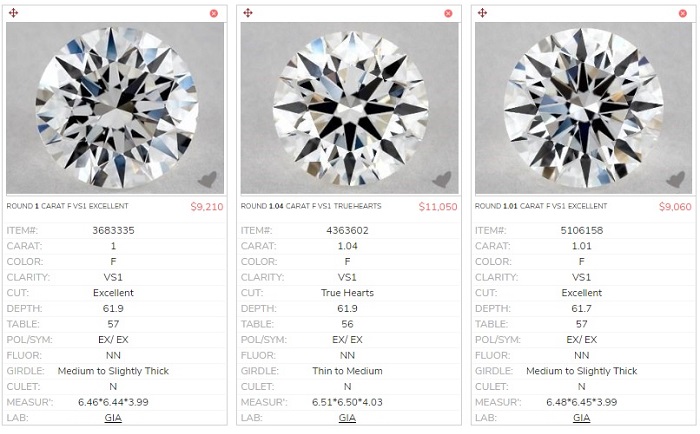
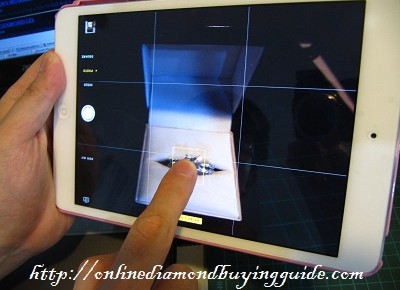


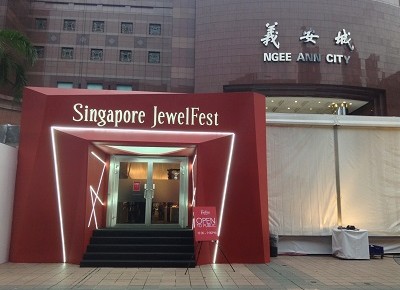







Leave A Comment